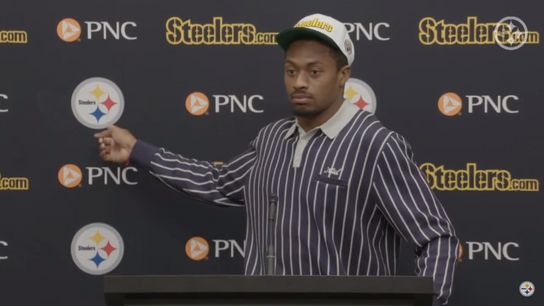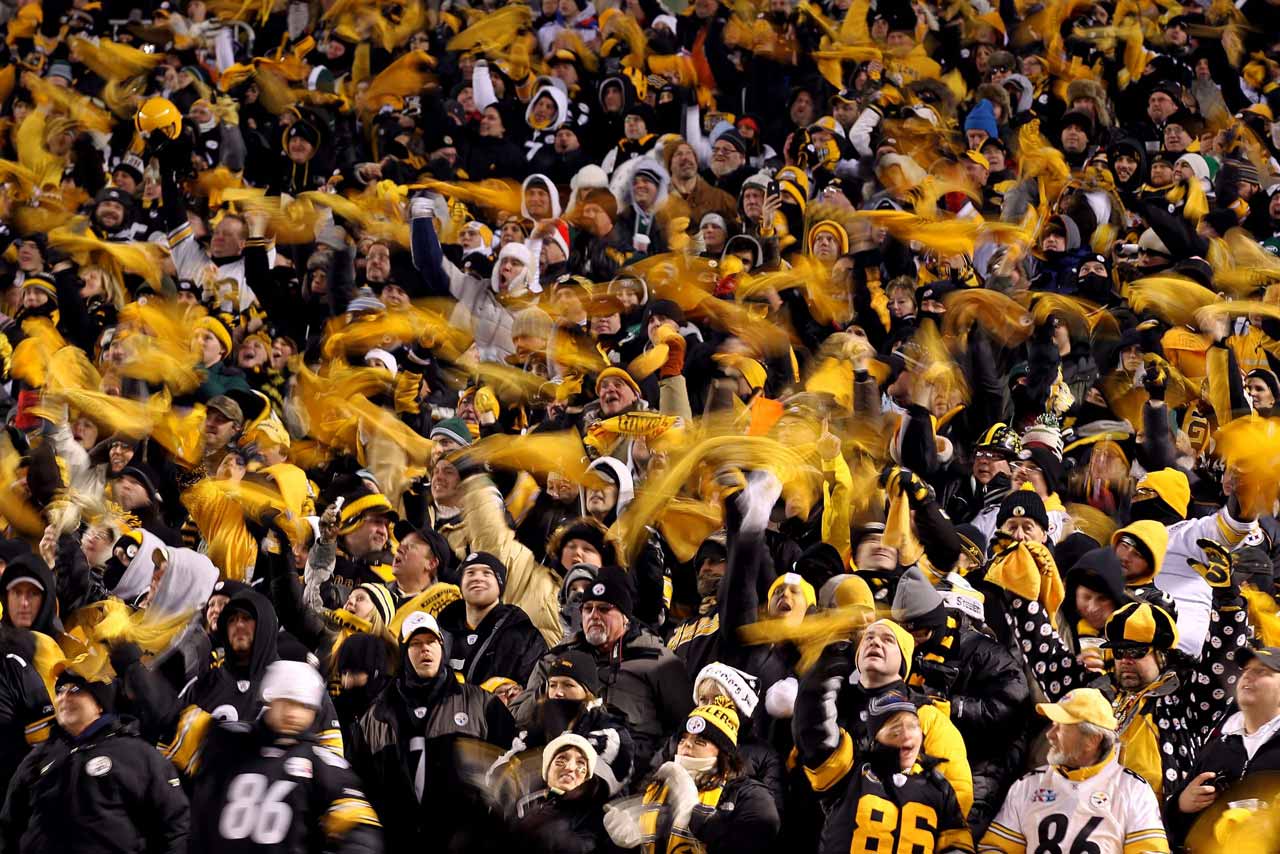The Pittsburgh Steelers are more than just a football team; they embody a rich history of steel, grit, and unwavering spirit. Their iconic logo, bold mascot, and unique identity reflect the heart and soul of Pittsburgh, a city built on industry and resilience. In this article, we dive into the story behind the Steelers' emblematic logo, explore the origins of their mascot, Steely McBeam, and uncover how these symbols capture the essence of the team and its devoted fan base.
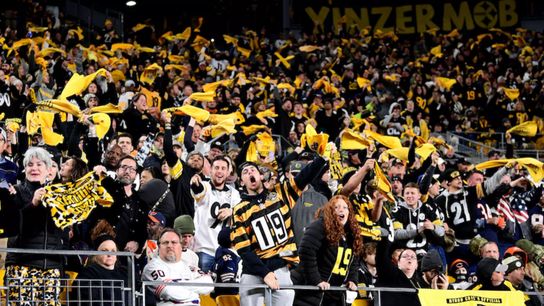
Getty Images
Pittsburgh Steelers fans wave their Terrible Towels aggressively as Styx famous song, Renegade plays during a home game at then-Heinz Field in Pittsburgh, PA.
OddsMonkey, home to tools like the matched betting calculator, reveals how the Steelers' iconic visual identity has grown into a powerful symbol of pride for both the franchise and the city it calls home.
Pittsburgh Steelers’ Logo
The Pittsburgh Steelers’ logo is one of the most recognizable in the NFL, symbolizing both the team’s roots and the city’s heritage. The logo, known as the “Steelmark,” features three spots yellow, red, and blue - inside a silver circle. Originally designed by U.S. Steel, the symbol represents the three materials used in steelmaking: coal, iron ore, and scrap metal. The Steelers adopted this logo in 1962, paying homage to Pittsburgh’s strong industrial background. Unlike other NFL teams, the Steelers place their logo only on one side of their helmet, a distinctive choice that has become a hallmark of their identity.
Pittsburgh Steelers’ mascot
The Pittsburgh Steelers’ mascot is Steely McBeam, a character that embodies the tough, blue-collar spirit of both the team and the city of Pittsburgh. Introduced in 2007, Steely McBeam was created as part of a fan contest and has since become a staple of game days at Acrisure Stadium, rallying the crowd with his energetic antics and amazing personality.
Steely McBeam is designed to represent a steelworker, a nod to Pittsburgh's deep roots in the steel industry, which is where the team’s name, “Steelers,” originally comes from. He sports the classic black and gold colors of the team, complete with a hard hat featuring the Steelers’ logo. His design reflects the heritage and hardworking ethos that the team prides itself on, making him a perfect fit for the fanbase.
On game days, Steely McBeam can be seen interacting with fans, posing for photos, and engaging in fun activities to keep the crowd’s energy high. He’s known for being particularly popular with younger fans, who enjoy his playful and animated presence on the sidelines. Outside of games, Steely McBeam also makes appearances at community events, charity functions, and local schools, representing the Steelers and connecting with fans of all ages.
While Steely McBeam might not have the long history that some of the Steelers' other traditions do, like the Terrible Towel or the team’s iconic black and gold uniforms, he has become an important part of the game-day experience. His character helps to blend the Steelers' rugged, working-class identity with the fun and family-friendly atmosphere of modern NFL games. Steely McBeam is a reminder of what the Steelers stand for—strength, perseverance, and a connection to their city’s proud heritage.
The Identity of the Pittsburgh Steelers
The Pittsburgh Steelers are known for having a strong, well-defined identity that resonates with fans both locally and across the country. At its core, the team embodies a tough, no-nonsense attitude that reflects the blue-collar roots of Pittsburgh itself.
The Steel City’s Team
The Steelers are synonymous with toughness. From the way they play on the field to the culture surrounding the team, there’s a sense of rugged determination that defines everything they do. This has been a hallmark of the team since the days of the legendary “Steel Curtain” defense in the 1970s, a time when Pittsburgh dominated the NFL with a relentless, physical style of play. The Steel Curtain wasn't just a defensive line; it was a mindset that shaped the entire organization. Even today, the team prides itself on a defensive philosophy that emphasizes physicality and effort.
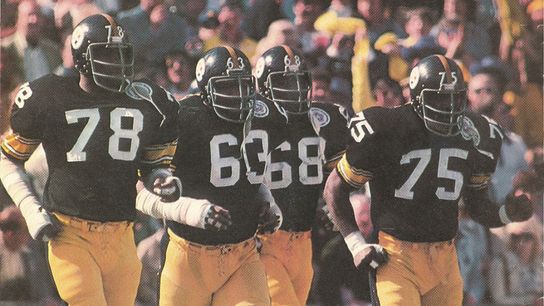
Steelers.com
Steelers' Steel Curtain: Dwight White, Ernie Holmes, L.C. Greenwood and Joe Greene.
Pittsburgh’s reputation as a working-class city has deeply influenced how the Steelers approach the game. Players, coaches, and fans often talk about “playing Steelers football,” which means embracing a gritty, smash-mouth approach that values discipline and effort over flashiness. The idea is simple: outwork your opponent, be tougher in the trenches, and show up in the moments that matter most. It’s an approach that has brought the team six Super Bowl titles and countless memorable moments, creating a legacy that few teams can match.
Tradition and Stability: A Family Affair
Another key element of the Steelers’ identity is their deep sense of tradition and stability. The team is still owned by the Rooney family, who founded the franchise in 1933, and that continuity has been a cornerstone of their success. This long-standing family ownership has helped foster a culture of loyalty and consistency, both on the field and in the front office. The Rooneys have become synonymous with the team’s values, maintaining a hands-on approach that prioritizes respect, integrity, and doing things “the right way.”
This sense of continuity is reflected in the Steelers’ approach to coaching. Unlike many NFL franchises that frequently change head coaches, the Steelers have had only three head coaches since 1969 - Chuck Noll, Bill Cowher, and Mike Tomlin. This stability is almost unheard of in modern sports and has allowed the team to build a consistent culture where each coach builds on the work of his predecessor. It’s a “next man up” mentality that extends from the locker room to the front office, ensuring that the Steelers always maintain their identity, even as the game evolves.
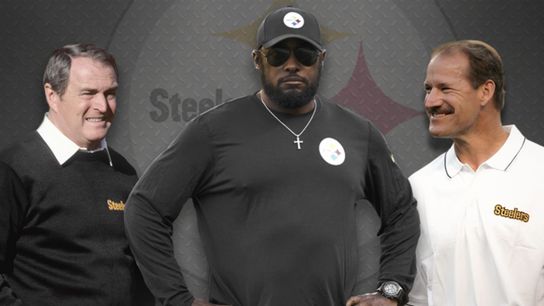
steelers.com
Steelers' only three head coaches since 1969 are Chuck Noll (left), Bill Cowher (right), and Mike Tomlin (middle).
A Loyal and Passionate Fanbase
The Steelers’ identity is also closely tied to their fanbase, often regarded as one of the most passionate and dedicated in the NFL. Steeler Nation, as it is commonly known, stretches far beyond the borders of Pennsylvania. Pittsburgh’s history as a steel town means that many former residents moved away when the industry declined, taking their loyalty to the Steelers with them. As a result, there are pockets of Steelers fans all over the country, and it’s not uncommon to see a sea of black and gold in visiting stadiums during away games.

